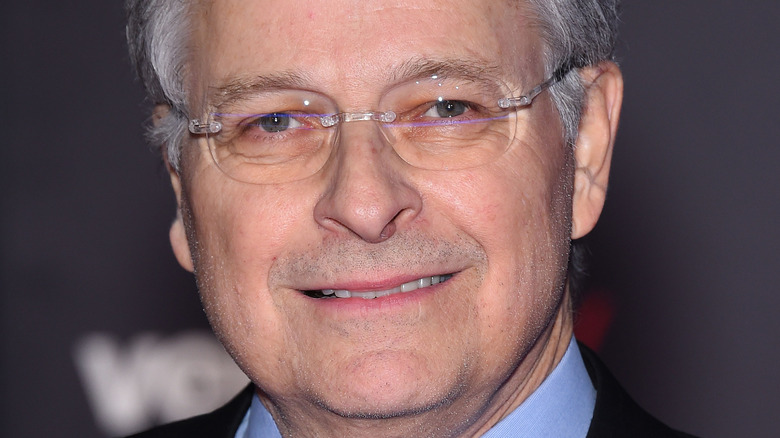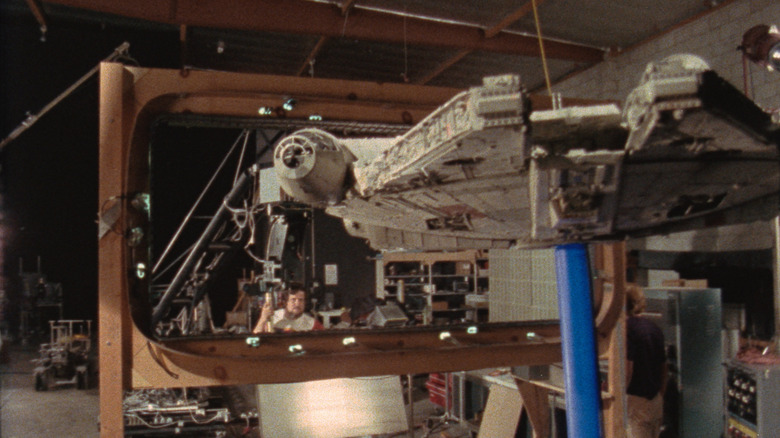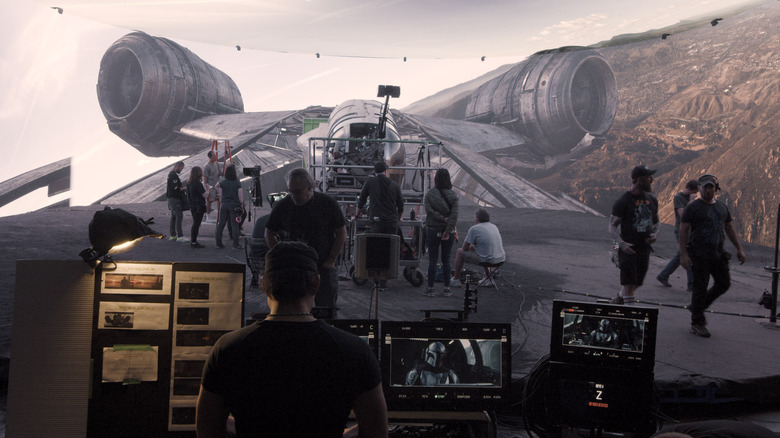Star Wars Legend Lawrence Kasdan Takes Us Inside Industrial Light And Magic In New Documentary - Exclusive Interview
Imagine you're a screenwriter who has had some of your scripts already purchased by major studios, but have yet to actually see one produced. Then imagine that the first movie to actually display your name on the screen as one of its two writers is the film considered to be one of the greatest sequels of all time and still the finest entry in the "Star Wars" franchise: "The Empire Strikes Back."
That's what happened to Lawrence Kasdan, who went to have an enormously successful career as both a screenwriter and director on films like "Return of the Jedi," "Raiders of the Lost Ark," "The Big Chill," "The Bodyguard," and "The Force Awakens." Thanks to his work on "Star Wars" and "Raiders," Kasdan has always had a close relationship with George Lucas and Industrial Light and Magic (ILM), the pioneering visual effects company that Lucas founded in 1975 to make "Star Wars."
Now, Kasdan is looking back at the history of that legendary shop with "Light and Magic," a six-part Disney+ documentary series chronicling ILM's beginnings, growth, and establishment as perhaps the preeminent visual effects company in the world. Just a few of the company's credits, aside from all the "Star Wars" and "Indiana Jones" films produced by Lucasfilm, include many of the "Star Trek" features, "E.T.: The Extra-Terrestrial," "Jurassic Park," "Back to the Future," "War of the Worlds," a number of Marvel movies, and many more milestones of modern filmmaking.
Kasdan says his reason for making the documentary was simple. "I wanted to know what the workshop's like behind the doors," he tells Looper. "How do they go about it? Is it like Santa's elves? What are they doing back there?"
Lawrence Kasdan wanted to find out how they made those visual effects in Star Wars
Was this documentary your idea, or were you approached by Imagine or Lucasfilm about doing it?
My wife and I had made a little documentary and I loved making it and cutting it and so I started meeting people who do documentaries. One of the ideas I had was for a history of visual effects, because I don't actually know that much about it, but I've been around it all this time.
I met the people at [production company] Imagine, and I said, "What about this?" And they said, "Yeah, what if we did ILM?" That meant a lot to me, because I had been around ILM for so much of the time, but didn't know how it worked. All the people that I would meet there were so amazing and they could do things that I couldn't do if I spent the rest of my life trying to learn how to draw a picture like that. I couldn't do it. You have to have that. They're like great athletes or scientists or anything. They're a different breed of person.
[Imagine] jumped on it and ILM and Disney were interested immediately, so it all happened very quickly. I said to everybody along the way — including George Lucas, who we wanted to involve in the process as much as we could — this is not about technology. There will be a lot of technology in it, but it's about these people and not just the original people, but the people that followed them and the people who were kids when they saw the ILM logo in Hong Kong or England or whatever, and how much mystery and romance that logo had for them.
That has not really changed. It's still that kind of company.
How ILM makes the impossible somehow possible
What was it like for you as a writer, particularly on the first couple of "Star Wars" films and "Raiders," to see the words you put on the page actually come to life on the screen thanks to this company?
It's miraculous. It's astounding. You feel you've wandered into some magical land that you never knew existed. One of the things that comes across in the show that was a surprise to me is how much people like Steven Spielberg and George and [Robert] Zemeckis and [James] Cameron depended on ILM. They would say, "This is what I want. Can you do it?" ILM didn't always know how to do it, but they were absolutely committed to helping these directors achieve those things.
The director didn't say it should look like this and move like this. They said, "I have a feeling about something like this," and ILM made it real. I find that very exciting, and I wanted to know what the workshop's like behind the doors, where they're creating this stuff, where they're presented with a new problem on every project. How do they go about it? Is it like Santa's elves? What are they doing back there? How are they creating and saying, "We need the aquapod in 'The Abyss,' or "We need a man to walk through bars. We need people to fly. We need people to melt." I love that they had to deal with all those problems.
There are a lot of VFX companies out there now, unlike when ILM first started. What do you think makes them still the gold standard today?
It was all handmade at the beginning and that tradition continues to this day. You can see the pleasure that [Lucasfilm executive creative director] Doug Chiang — who's been around forever — gets when he gets a chance to use an actual model in "The Mandalorian." [Jon] Favreau's very big on this. J.J. [Abrams] was like that when we did "The Force Awakens." He wanted to use as much of that handmade quality as possible, because it gives the movie life. I feel that very strongly myself. You want to feel [that] it's a real thing.
Sometimes, people say to me, "What's your favorite effect?" I always say, "I thought the best effects were in 'Raiders' when you had a wax head melting." I don't care if it looks perfectly real, like nowadays. I care that is a great idea and everybody gets it. I find that to be the most impressive effect of all. Now, you know digitally you can do anything, but back then, you didn't know that, and they didn't. They had to shape them, sculpt them, paint them, organize them with their hands, and I love that aspect of it.
"Light and Magic" is streaming on Disney+ now.
This interview has been edited for clarity.


